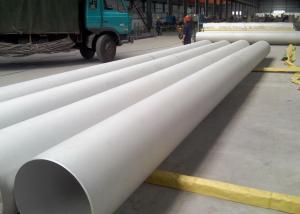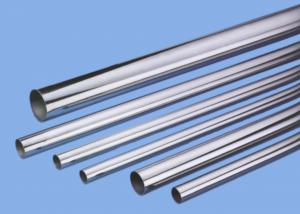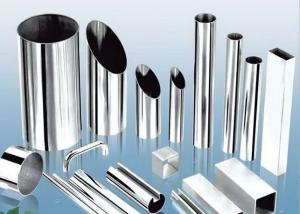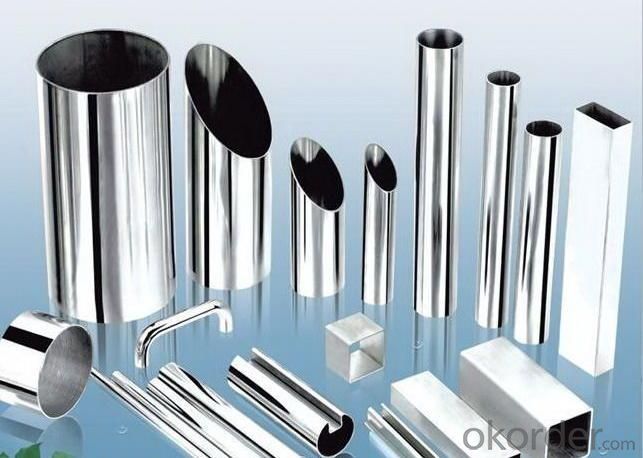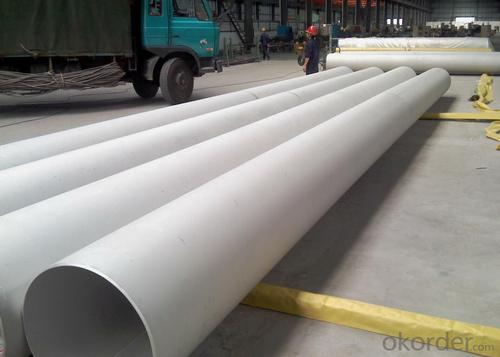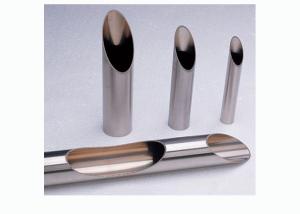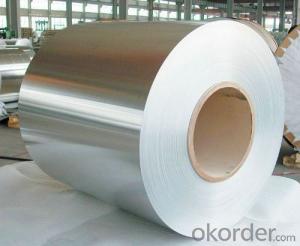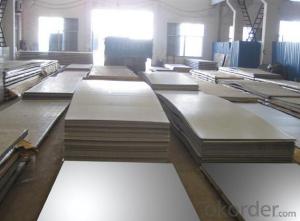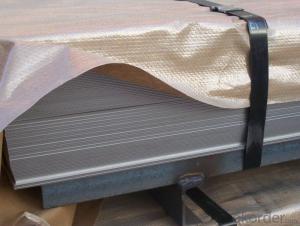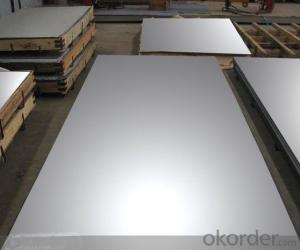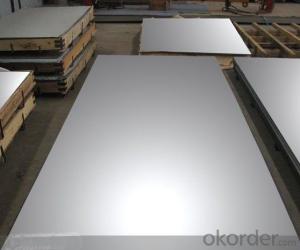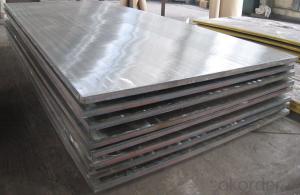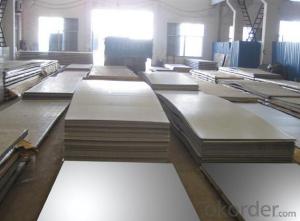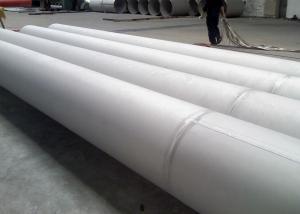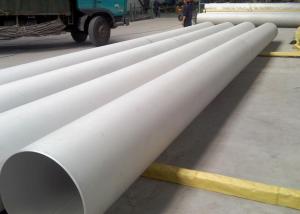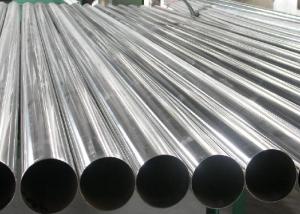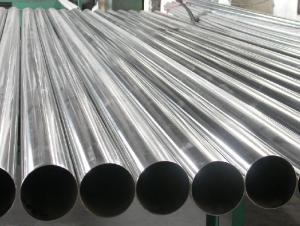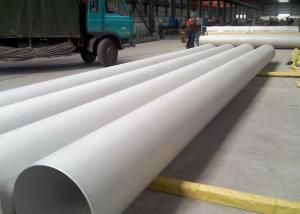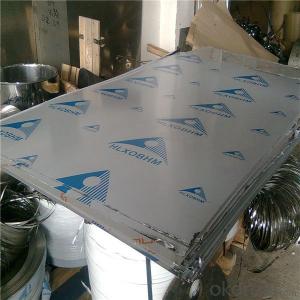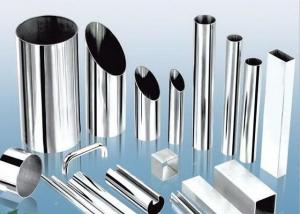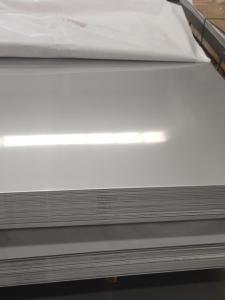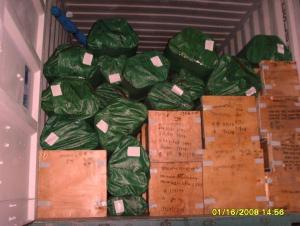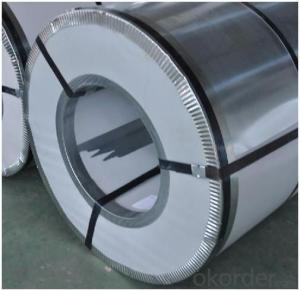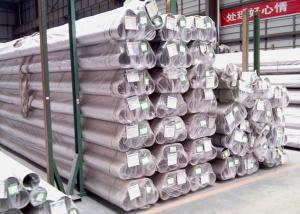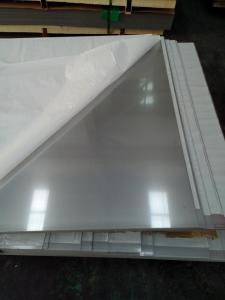304 Stainless Steel Welded Pipe
- Loading Port:
- China Main Port
- Payment Terms:
- TT or LC
- Min Order Qty:
- 5 Tons m.t.
- Supply Capability:
- 2000 Tons per Month m.t./month
OKorder Service Pledge
OKorder Financial Service
You Might Also Like
Best Price For 304 Stainless Steel Welded Pipe
Application Of Best Price For 304 Stainless Steel Welded Pipe
Industrial Fluid Conveying
Boiler, Heat Exchanger and condenser
Sanitary and Thin-wall water pipe
Oil and Gas transportation etc.
Sizes Of Best Price For 304 Stainless Steel Welded Pipe
| OUTER DIAMETER | OD | WALL THICKNESS | |||
| SCH5S | SCH5S | SCH5S | |||
N.B | NPS | mm | mm | mm | mm |
8 | 1/4' | 13.72 | - | - | 2.24 |
10 | 3/8' | 17.15 | - | - | 2.31 |
15 | 1/2' | 21.34 | 1.65 | 2.11 | 2.77 |
20 | 3/4' | 26.67 | 1.65 | 2.11 | 2.87 |
25 | 1' | 33.4 | 1.65 | 2.77 | 3.38 |
32 | 1-1/4' | 42.16 | 1.65 | 2.77 | 3.56 |
40 | 1-1/2' | 48.26 | 1.65 | 2.77 | 3.68 |
50 | 2' | 60.33 | 1.65 | 2.77 | 3.91 |
65 | 2-1/2' | 73.03 | 2.11 | 3.05 | 5.16 |
80 | 3' | 88.9 | 2.11 | 3.05 | 5.49 |
90 | 3-1/2' | 101.6 | 2.11 | 3.05 | 5.74 |
100 | 4' | 114.3 | 2.11 | 3.05 | 6.02 |
125 | 5' | 141.3 | 2.77 | 3.4 | 6.55 |
150 | 6' | 168.28 | 2.77 | 3.4 | 7.11 |
200 | 8' | 219.08 | 2.77 | 3.76 | 8.18 |
250 | 10' | 273.05 | 3.4 | 4.19 | 9.27 |
300 | 12' | 323.85 | 3.96 | 4.57 | 9.52 |
350 | 14' | 355.6 | 3.96 | 4.78 | 11.13 |
400 | 16' | 406.4 | 4.19 | 4.78 | 12.7 |
450 | 18' | 457.2 | 4.19 | 4.78 | 14.27 |
500 | 20' | 508 | 4.78 | 5.54 | 15.09 |
550 | 22' | 558.8 | 4.78 | 5.54 | 15.09 |
600 | 24' | 609.6 | 5.54 | 6.35 | 17.48 |
650 | 26' | 660.4 | 5.54 | 7.92 | 17.48 |
700 | 28' | 711.2 | 5.54 | 7.92 | 17.48 |
750 | 30' | 762 | 6.35 | 7.92 | 17.48 |
800 | 32' | 812.8 | - | 7.9 | 17.48 |
850 | 34 | 863.6 | - | 7.92 | 17.48 |
900 | 36' | 914.4 | - | 7.92 | 19.05 |
1000 | 40' | 1016 | - | 9.53 | - |
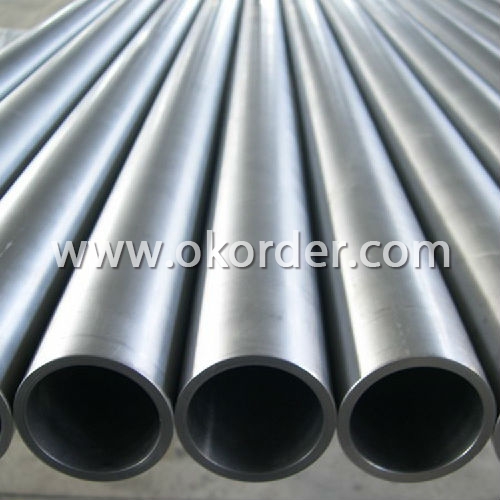
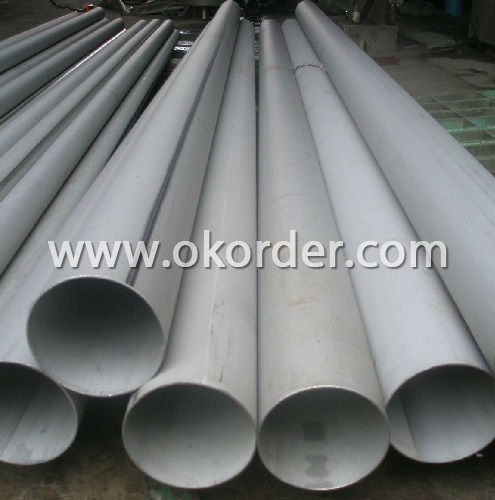
- Q: Can stainless steel sheets be used for decorative backsplashes?
- Yes, stainless steel sheets can be used for decorative backsplashes. Stainless steel is a versatile and durable material that is commonly used in kitchen and interior design. It offers a sleek and modern look, making it a popular choice for contemporary and industrial-style kitchens. Stainless steel backsplashes are not only visually appealing but also highly functional, as they are resistant to heat, stains, and water. Moreover, stainless steel is easy to clean and maintain, making it a practical option for a backsplash in a busy kitchen. Whether you prefer a polished, brushed, or patterned finish, stainless steel sheets can be customized to suit your aesthetic preferences, allowing you to create a stylish and eye-catching backsplash that complements your overall design scheme.
- Q: What is the weldability of stainless steel sheets?
- The weldability of stainless steel sheets is typically regarded as favorable due to the high percentage of chromium present in stainless steel. This chromium forms a passive oxide layer on the metal's surface, which contributes to exceptional corrosion resistance and the prevention of heat-affected zones during welding. Nevertheless, the weldability of stainless steel can differ based on the specific grade and thickness of the sheets. Austenitic stainless steels, such as 304 and 316, are known for their high weldability and can be easily joined using various welding techniques like TIG and MIG. Conversely, martensitic or duplex stainless steels may possess lower weldability due to elevated carbon content or distinct microstructures. These grades may necessitate preheating and post-weld heat treatment to prevent cracking and maintain desired mechanical properties. Moreover, the thickness of stainless steel sheets can impact weldability. Thicker sheets may require increased heat input and specialized welding procedures to ensure proper fusion and prevent distortion. Overall, stainless steel sheets are generally considered to possess good weldability. However, it is crucial to consider the specific grade and thickness of the sheets, as well as the required welding techniques and procedures, to achieve optimal results. Seeking professional guidance and expertise in stainless steel welding is recommended to ensure successful and long-lasting welds.
- Q: Can stainless steel sheets be used for water purification systems?
- Water purification systems can utilize stainless steel sheets. Due to its resistance to corrosion, durability, and hygienic properties, stainless steel is commonly chosen as a material for water purification systems. It can withstand harsh environmental conditions without rusting, making it suitable for long-term use in water treatment applications. Furthermore, stainless steel does not react with water, ensuring the purity and safety of the treated water by not leaching harmful substances. Its smooth and non-porous surface is easy to clean and maintain, reducing the risk of bacterial growth and contamination. In conclusion, stainless steel sheets are an excellent option for constructing various components of water purification systems, such as tanks, filters, and pipes.
- Q: Can stainless steel sheets be used for wastewater treatment?
- Yes, stainless steel sheets can be used for wastewater treatment. Stainless steel is highly resistant to corrosion and can withstand the harsh conditions and corrosive elements often found in wastewater treatment processes. Additionally, its smooth surface makes it easy to clean and maintain, ensuring long-term durability and effectiveness in treating wastewater.
- Q: Can stainless steel sheets be used for conveyor systems?
- Yes, stainless steel sheets can be used for conveyor systems. Stainless steel is a durable and robust material that is resistant to corrosion, making it ideal for conveyor systems that may be exposed to moisture or harsh chemicals. Additionally, stainless steel is easy to clean and maintain, which is important for ensuring the hygiene and longevity of conveyor systems in industries such as food processing or pharmaceuticals. The smooth surface of stainless steel sheets also facilitates the movement of materials along the conveyor, reducing friction and improving efficiency. Overall, stainless steel sheets are a popular choice for conveyor systems due to their strength, corrosion resistance, and ease of maintenance.
- Q: What are the different types of etched patterns available for stainless steel sheets?
- Stainless steel sheets come in a range of etched patterns, each with its own distinctive and visually appealing design. Some popular options include: 1. The Diamond Pattern: This classic and elegant design features small diamond-shaped indentations etched onto the stainless steel surface. It is commonly used in architectural applications. 2. The Checkerboard Pattern: Resembling a checkered board, this pattern adds a modern and geometric touch to stainless steel sheets. It is often utilized in interior design and decorative settings. 3. The Floral Pattern: Incorporating floral designs etched onto the stainless steel sheet, this pattern brings an element of elegance and sophistication. It is commonly seen in luxury home decor and jewelry. 4. The Geometric Pattern: Offering a contemporary and artistic look, this pattern includes various geometric shapes etched onto the stainless steel sheet. It is suitable for both modern and traditional settings. 5. The Wave Pattern: By etching wavy lines onto the stainless steel sheet, this pattern creates a sense of movement and fluidity. It is frequently employed in architectural projects for a dynamic and visually interesting effect. 6. The Textured Pattern: With various textures like brushed, hammered, or linen finishes etched onto the stainless steel sheet, this pattern adds depth and dimension to the metal. It is ideal for interior design and decorative purposes. 7. Custom Patterns: In addition to the standard options, it is also possible to create custom patterns based on specific designs or logos. This allows for personalized and unique stainless steel sheets, often used in branding or specialty projects. Overall, the wide range of etched patterns available for stainless steel sheets provides endless possibilities for design and application. Whether for architectural, decorative, or industrial purposes, there is a pattern to suit every need and aesthetic preference.
- Q: Can stainless steel sheets be used for railway station facades?
- Yes, stainless steel sheets can be used for railway station facades. Stainless steel is a durable and corrosion-resistant material that can withstand harsh weather conditions, making it suitable for exterior applications. It also has an attractive and modern appearance, making it a popular choice for architectural design. Additionally, stainless steel sheets are easy to clean and maintain, which is important for high-traffic areas like railway stations. Overall, stainless steel sheets are a suitable and practical option for railway station facades.
- Q: Can stainless steel sheets be used in marine environments?
- Yes, stainless steel sheets can be used in marine environments. Stainless steel is highly resistant to corrosion, making it suitable for marine applications where it will be exposed to saltwater and high humidity. It is commonly used in marine vessels, offshore platforms, and other structures that require durability and resistance to rust and corrosion.
- Q: Can stainless steel sheets be used for elevator shafts?
- Elevator shafts can indeed utilize stainless steel sheets, as they offer durability, resistance to corrosion, and an appealing aesthetic. By employing stainless steel sheets, one can ensure a lasting and easy-to-maintain solution, as they resist rust and corrosion caused by factors like humidity, moisture, and chemicals. Moreover, stainless steel possesses strength and can withstand the weight and stress typically encountered by elevator shafts. The sleek and contemporary look of stainless steel further enhances the overall design value of the elevator shaft. Consequently, stainless steel sheets serve as a dependable and fitting material choice for constructing elevator shafts.
- Q: What are the common methods of cutting stainless steel sheets?
- Cutting stainless steel sheets can be done using various methods, each with its own advantages and limitations. Let's take a look at a few commonly employed techniques: 1. Shearing: When using shearing, a machine with two blades is utilized to effortlessly slice through the stainless steel sheet. This technique is ideal for thinner sheets and delivers clean, straight cuts. However, there is a possibility of a slight burr on the cut edge. 2. Plasma cutting: Plasma cutting is a versatile approach that harnesses a high-temperature plasma arc to melt and remove the metal. This method is effective for cutting stainless steel sheets of different thicknesses and shapes. It offers speedy and precise cuts, accommodating both straight and curved lines. 3. Laser cutting: Laser cutting relies on a focused laser beam to effectively slice through stainless steel sheets. It is known for its high level of accuracy, generating smooth and precise cuts with minimal distortion. Laser cutting is suitable for thin and thick sheets but may be slower than other methods when dealing with thicker materials. 4. Waterjet cutting: Waterjet cutting employs a high-pressure stream of water mixed with abrasive particles to carve through stainless steel. This technique is renowned for its precision and ability to handle varying thicknesses and shapes. Waterjet cutting produces clean edges and avoids heat-affected zones. However, it may be slower and more costly compared to other methods. 5. Sawing: Sawing is a traditional method that employs a saw blade to cut through stainless steel sheets. It is most suitable for thicker sheets and can handle both straight and curved cuts. Sawing yields relatively clean cuts, although it may result in more material waste compared to other techniques. These are just a few examples of the common methods employed to cut stainless steel sheets. The choice of method depends on factors such as sheet thickness, desired cut quality, shape complexity, and budget. It is crucial to consider the specific requirements of the project and seek professional advice to determine the most suitable cutting method.
1. Manufacturer Overview
| Location | Zhejiang,China |
| Year Established | 2000 |
| Annual Output Value | Above US$8.3 Million |
| Main Markets | Europe, America |
| Company Certifications | ISO9001:2000 |
2. Manufacturer Certificates
| a) Certification Name | |
| Range | |
| Reference | |
| Validity Period |
3. Manufacturer Capability
| a) Trade Capacity | |
| Nearest Port | Shanghai |
| Export Percentage | 30% |
| No.of Employees in Trade Department | 30 People |
| Language Spoken: | English;Chinese |
| b) Factory Information | |
| Factory Size: | Above 80,000 square meters |
| No. of Production Lines | Above 7 |
| Contract Manufacturing | OEM Service Offered;Design Service Offered |
| Product Price Range | Average |
Send your message to us
304 Stainless Steel Welded Pipe
- Loading Port:
- China Main Port
- Payment Terms:
- TT or LC
- Min Order Qty:
- 5 Tons m.t.
- Supply Capability:
- 2000 Tons per Month m.t./month
OKorder Service Pledge
OKorder Financial Service
Similar products
Hot products
Hot Searches
Related keywords
